Mini reviews
Johanna Korhonen: Kymmenen polkua populismiin [Ten paths to populism]
3 October 2013 | Mini reviews, Reviews
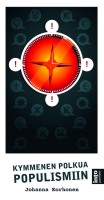 Kymmenen polkua populismiin. Kuinka vaikenevasta Suomesta tuli äänekkään populismin pelikenttä
Kymmenen polkua populismiin. Kuinka vaikenevasta Suomesta tuli äänekkään populismin pelikenttä
[Ten paths to populism. How silent Finland became a playing field for loud populism]
Helsinki: Into Kustannus Oy, 2013. 81p.
ISBN 951-952-264-257-8
€15, paperback
This pamphlet on the populist True Finns party was commissioned by the British think tank Counterpoint (PDF available in Finnish). In 2011, under the leadership of the rhetorically gifted Timo Soini, the True Finns became the largest opposition party in the Finnish parliament. In the background of this phenomenon the journalist Johanna Korhonen sees, among other things, the recession of the 1990s, the fear of economic insecurity, and the paucity of alternatives and debate that characterise politics in Finland. The left-leaning party favours simplifications and longs for national unity and security. It nevertheless includes an extremist nationalist minority whose agenda includes resistance to the European Union, cultural diversity, minority rights and foreign influences, and can even be racist. Korhonen focuses and simplifies in pamphleteering fashion, but argues patiently, basing her views on facts, and considers the beneficial effects the populist party has had on the national debate, offering her suggestions for a more humane politics.
Translated by Hildi Hawkins
Kari Hotakainen: Luonnon laki [Law of nature]
26 September 2013 | Mini reviews, Reviews
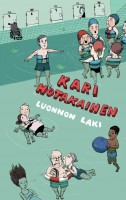 Luonnon laki
Luonnon laki
[Law of nature]
Helsinki: Siltala, 2013. 283p.
ISBN 978-952-2341853
€23.90, hardback
Kari Hotakainen’s twelfth novel is characterised by a dramatic plot. A year and a half ago, the author had a car crash, which he miraculously survived. Luonnon laki draws on Hotakainen’s experience, at the same time continuing the series started by his last two novels, with their commentaries on the contemporary world. The main character, the entrepreneur Rauhala, wakes up in hospital after a car crash and begins the slow process of recovery and rehabilitation. Incapable of movement and dependent on the care of others, the man has time to think – to think, for example of the free healthcare service of a welfare state such as Finland, whose cost, in his case, is high. Ideologically estranged from her father, his daughter is about to give birth to her first child; Rauhala himself is essentially reborn and makes peace with his daughter. Both melancholy and amusing, linguistically rich and delicious in its associatons, this tale and its characters are highly enjoyable.
Translated by Hildi Hawkins
Philip Teir: Vinterkrig. En äktenskapsroman [The winter war. A marriage novel]
19 September 2013 | Mini reviews, Reviews
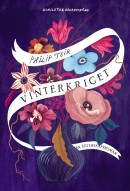 Vinterkrig. En äktenskapsroman
Vinterkrig. En äktenskapsroman
[Winter war. A marriage novel]
Helsingfors: Schildts & Söderströms, 2013. 326 p.
ISBN 978-951-52-3207-6
€26.70, hardback
Finnish translation:
Talvisota. Avioliittoromaani
Suom. (Translated by): Jaana Nikula
Helsinki: Otava, 2013. 347 p.
ISBN 978-9511269854
€30.30, hardback
This first novel by Philip Teir (born 1980) brings to mind a stereotype of the Finland-Swedish minority: pleasant, controlled, civilised and rather amusing. Teir has previously written short stories, and no doubt his work as a cultural journalist has sharpened his detailed perceptions of society and life in general. Hence, the result is controlled and rather amusing. In the focus are sociologist Max and personnel manager Katarina, who have in their long marriage become alienated from each other. Two grown-up daughters have problems of their own, as a working mother of small children, and as an arts student trying to find a direction for her life. Teir’s characters look for ways to solve their problems: Max seeks the company of a younger woman, whereas the more straightforward Katarina applies for a divorce. Yet, amidst confusion, Teir seems to place his trust in a traditional safety net, represented in the novel by the family and the community. The portrait of a middle-class, academic family with rather ordinary problems is ironically gentle: a pleasant reading experience.
Aleksis Kivi: Kirjeet [Letters]
8 August 2013 | Mini reviews, Reviews
 Kirjeet
Kirjeet
[Letters]
Critical edition, edited by Juhani Niemi et al.
Swedish-language letters translated into Finnish by Juhani Lindholm and Ossi Kokko
Helsinki: Suomalaisen Kirjallisuuden Seura (the Finnish Literature Society), 2012. 426 p, two map drawings
ISBN 978-952-222-390-6
€ 43, paperback
In his poetry, plays and masterly novel Seitsemän veljestä (Seven Brothers, 1870), Aleksis Kivi (1834–72) laid the foundations of Finnish fiction. Kivi died an early death, impoverished and mentally ill. In this critical edition seventy of his letters and three letters received by him are presented with notes and an introduction. Most of the book consists of background articles and supplementary items. Professor Jyrki Nummi provides an interesting analysis of biographies of Kivi. The other authors discuss, for example the literature Kivi drew on in his own works: he had read world classics in Swedish, but in Finnish there was not yet much to read apart from the folk poetry. Other topics of discussion are Kivi’s skill in using Swedish – the language of the educated class in Finland – and what his letters reveal about his network of acquaintances. The letters are grouped in chronological order, with introductions by Professor Emeritus Juhani Niemi. Most of the letters are comparatively short, sent to relatives and friends. They reflect Kivi’s attitude towards his own work, as well as his worries about his financial situation and declining health.
Translated by David McDuff
Olli Bäckström: Polttolunnaat. Eurooppa sodassa 1618–1630 [Trial by fire. Europe at war 1618–1630]
31 July 2013 | Mini reviews, Reviews
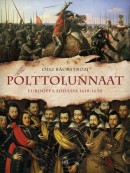 Polttolunnaat. Eurooppa sodassa 1618–1630
Polttolunnaat. Eurooppa sodassa 1618–1630
[Trial by fire. Europe at war 1618–1630]
Helsinki: Suomalaisen Kirjallisuuden Seura (Finnish Literature Society), 2013. 558 p.
ISBN 978-952-222-394-4
€39, paperback
The Thirty Years War of 1618-48 which ravaged Europe, extending its influence to overseas colonies, has been considered a religious conflict in which several countries were involved for reasons of power politics. Olli Bäckström, who belongs to the younger generation of Finnish military historians, sees the first twelve years of the war as a separate entity that bears similarities to the so-called asymmetric conflicts of our own time, such as those in Africa, which are fought by mercenaries and non-state actors for whom war is an industry and way of life. The book begins by describing the situation in Europe in the early seventeenth century, and the background of the war. Contemporary researchers view it as a religious conflict that originally began in Bohemia and then turned into a political power struggle, but Bäckström sees also the early phase as remarkably nuanced. The Nordic states of Denmark and Sweden (of which Finland was a part) were also in pursuit of fame and power on the battlefields of Central Europe, although Sweden did not really take part in the war until the next phase. Bäckström vividly portrays the alliances formed by the various political actors in order to safeguard their interests, and the methods of warfare employed by the armed forces in the service of the different rulers.
Translated by David McDuff
Juha Siltala: Nuoriso – mainettaan parempi? [Youth – better than its reputation?]
20 June 2013 | Mini reviews, Reviews
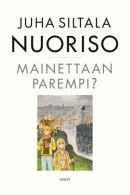 Nuoriso – mainettaan parempi? Nykynuorten sopeutumisratkaisut historiassa
Nuoriso – mainettaan parempi? Nykynuorten sopeutumisratkaisut historiassa
[Youth – better than its reputation? Adaptation responses of contemporary youth in historical perspective]
Helsinki: WSOY, 2013. 543 p, ill.
ISBN 978-951-0-38581-4
38€, hardback
In his latest book professor and psychohistorian Juha Siltala examines what surveys tell us about the lives and attitudes of young people, especially in Finland. Siltala also considers the position of Western youth from a historical perspective. Finnish education has changed dramatically and continually since the Second World War. The media often give a negative image of modern youth, but the author shows that during the 2000s the majority of young people received more attention and better treatment from their parents than previous generations, and also showed a greater sense of social responsibility and faith in the future. However, economic pressures and the ever-increasing demands of the labour market threaten to undermine their confidence in the future and their ability to cope with life. Siltala considers their coping strategies, including fantasy stories, and examines the dangers and negative aspects of youth culture. The book is based on extensive source material and provides a multifaceted discussion of a permanently topical issue.
Translated by David McDuff
Riikka Pelo: Jokapäiväinen elämämme [Our everyday life]
13 June 2013 | Mini reviews, Reviews
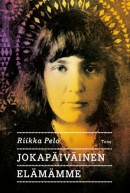 Jokapäiväinen elämämme
Jokapäiväinen elämämme
[Our everyday life]
Helsinki: Teos, 2013. 526 p.
ISBN 978-951-851-389-9
35.90€, hardback
At the centre of Riikka Pelo’s second novel are the Russian poet Marina Tsvetaeva (1892–1941) and her daughter Ariadna Efron (1912–1975). This broad historical novel depicts the mental landscape of Russia during the period between the two great wars, from the 1920s to the 1940s. The mother is a religious believer and idealist, her daughter a more pragmatic empiricist. The family’s fate is controlled by the Soviet state apparatus, which sends it into exile in Paris where Tsvetaeva’s husband Sergei Efron takes a job as a secret police informer in an organisation devoted to the repatriation of Soviet emigrés. In the 1930s they return to Moscow, where life under the watchful eye of Stalin is filled with difficulty and paranoia. Pelo portrays the awkward relationship between mother and daughter with particular vividness. The indisputable star of the family is the mother – her ambition extends to her daughter, who to her disappointment is more interested in the visual arts than in poetry. The historical characters of Pelo’s impressive novel live their contradictory lives in decades of social upheaval.
Translated by David McDuff
Art Deco / ja taiteet / i konsten / and the arts
6 June 2013 | Mini reviews, Reviews
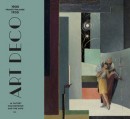 Scientific editor: Laura Gutman
Scientific editor: Laura Gutman
Editor: Susanna Luojus
Helsinki: Suomalaisen Kirjallisuuden Seura (the Finnish Literature Society), 2013. 179 p., ill.
Texts in Finnish and Swedish, summaries in English
ISBN 978-952-222-430-9
€38, hardback
This work was published simultaneously with the opening of the exhibition ‘Art Déco and the Arts. France–Finlande 1905–1935’, running at the Amos Anderson Art Museum in Helsinki from March to 21 July. Antiquity was the primary source of inspiration for this broad artistic movement in France, after the breakthrough of Fauvism in 1905. In Finland this antimodern – and yet at the same very modern – movement manifested itself most clearly in industrial art, in the 1920s in classicism and 1930s in functionalism. But from early on, Finnish painters and sculptors also kept an eye on the French art and artists – among them Maurice Denis, the spokesman of the antimodernists. The dialogue between the visual and the performative arts (theatre and dance) in Finland is also examined. Samples of Art Deco architecture are mostly absent, as the emphasis is on painting and sculpture. Some less well-known artists of the period (painter Nikolai Kaario, sculptor and engraver Eva Gyldén) are introduced. The exhibition and the richly illustrated book introduce both Finnish and French works – from many museums and collections in France – of both industrial and fine arts, in pictures and in words by nine specialists, offering the reader fresh and interesting comparisons.
Valokuva taiteeksi. Photography into Art. Hannula & Hinkka -kokoelma / Collection
30 May 2013 | Mini reviews, Reviews
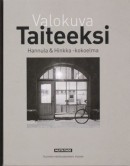 Valokuva taiteeksi. Photography into Art. Hannula & Hinkka -kokoelma / Collection
Valokuva taiteeksi. Photography into Art. Hannula & Hinkka -kokoelma / Collection
Toimituskunta [Edited by] Erja Hannula, Jorma Hinkka, Sofia Lahti, Tuomo-Juhani Vuorenmaa
English translation: Jüri Kokkonen
Helsinki: Aalto University School of Arts, Design and Architecture, Aalto ARTS Books (Musta Taide 4/2012; publication series of The Finnish Museum of Photography 44.) 209 p., ill.
ISBN 958-952-292-000-3
€33.90, hardback
It has been typical of Finland that it lacks collections of international photography, private or public. In the politically turbulent 1970s interest in photography began to grow. The Hippolyte Gallery, run by artist Ismo Kajander, exhibited international photography by Diane Arbus, Eugène Atget and Édouard Boubat, among others. The graphic designer Jorma Hinkka (also Art Director of Books from Finland, 1998–2006) began making posters for Hippolyte ‘out of pure enthusiasm’, and designing books by Finnish photographers, among them Pentti Sammallahti, Ismo Hölttö, Jorma Puranen and Merja Salo. As a result of spending so much time with ‘the black art’ (as it was called by a Finnish pioneer of photography, I.K. Inha, in 1908), Hinkka and his art director spouse Erja Hannula began to collect samples of it. After 30 years, in 2012, they donated more than two hundred photographs by almost a hundred artists to The Finnish Museum of Photography. The social status of the black art has risen considerably since the 1970s, as has professionalism in the field. This book presents excellent reproductions of the collection of photos, taken within a century and a half; the variety of styles and subjects chosen surprise with its richness.
Eveliina Talvitie: Keitäs tyttö kahvia. Naisia politiikan portailla [Put the kettle on, girl. Women on the ladder of politics]
23 May 2013 | Mini reviews, Reviews
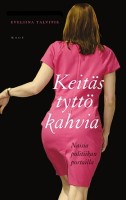 Keitäs tyttö kahvia. Naisia politiikan portailla
Keitäs tyttö kahvia. Naisia politiikan portailla
[Put the kettle on, girl. Women on the ladder of politics]
Helsinki: WSOY, 2013. 332 p., ill.
ISBN 978-951-0-39485-4
€29, hardback
In 1906 Finnish women were the first in Europe to obtain the right to vote, and Finland, like the other Nordic countries, is viewed as a model of equality. Journalist and author Eveliina Talvitie examines the role of women in politics. She has interviewed seventeen Finnish female politicians, more than half of whom have served as cabinet ministers. Among them are former President Tarja Halonen and Elisabeth Rehn, who has long worked on international assignments – between her and the youngest politician in the book there is a 52-year age gap. The interviewees describe the different aspects of the progress of their careers, their successes and setbacks. At the end of each chapter the author considers the challenges faced by female politicians from a particular point of view, backing up her conclusions with supplementary interviews. Not all of the politicians in the book have been handicapped because of their gender, but the work clearly demonstrates that, even in a relatively egalitarian country, female politicians are still treated differently from men, and their career paths can often be more difficult than those of their male colleagues.
Translated by David McDuff
Panu Rajala: Hirmuinen humoristi. Veikko Huovisen satiirit ja savotat [The awesome humorist. The satires and logging sites of Veikko Huovinen]
16 May 2013 | Mini reviews, Reviews
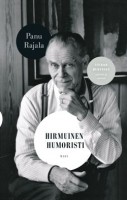 Hirmuinen humoristi. Veikko Huovisen satiirit ja savotat
Hirmuinen humoristi. Veikko Huovisen satiirit ja savotat
[The awesome humorist. The satires and logging sites of Veikko Huovinen]
Helsinki: WSOY, 2012. 310 p.
ISBN 978-951-0-38952-2
€38, hardback
Author Veikko Huovinen (1927–2009) became widely popular with the publication of his novel Havukka-ahon ajattelija (‘The backwoods philosopher’, 1952). Huovinen, who trained as a forest ranger, spent his life mainly in north-eastern Finland and did not like publicity; the author and theatre scholar Panu Rajala deals with Huovinen’s biography relatively briefly, focusing on a thematic analysis of Huovinen’s extensive and thematically rich output of novels and short stories. He places the the books in the context of Finnish literature, and also examines their film and television adaptations. Huovinen was an intellectually conservative, a highly original humorist; among his books are satirical biographies of Hitler and Stalin. His prose fiction, set in the natural wilds of the North, has not always won the appreciation of pro-modernist critics. Huovinen’s lively and original language is not easy to translate – for example, his only work published in English is a beautiful documentary novel Puukansan tarina (‘Tale of the forest folk’), which received a Finlandia Prize nomination in 1984.
Translated by David McDuff
Marjo Niemi: Ihmissyöjän ystävyys [The cannibal’s friendship]
8 May 2013 | Mini reviews, Reviews
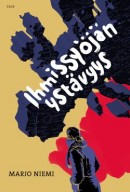 Ihmissyöjän ystävyys
Ihmissyöjän ystävyys
[The cannibal’s friendship]
Helsinki: Teos, 2012. 402 p.
ISBN 978-951-851-359-2
€27.80, hardback
Marjo Niemi’s third novel may be described with the adjective ‘intemperate’. The book’s narrator is a thirty-something woman who is inclined to ranting. A friend’s suicide drives her to depression, which breaks out in endless criticism of her friends’ lifestyles. Her tolerance is tested not only by her hedonistic friends but also by an entire continent: she wallows in endless diatribes about the history of Europe and its injustices. The bubbling text forms a meta-level, a book within a book. Only writing seems meaningful: ‘I am really not going to write about my life, because life is a ridiculous joke compared to literature.’ The Great Novel that is being built by the narrator gradually opens out into a story about a mental hospital psychiatrist and one of his patients who has suffered a loss of memory. The author sees her work as a ‘poetic allegory of Europe ‘, but it is also a study of friendship, guilt, envy, and the difficulty of doing good. Caricature of an almost grotesque kind is skilfully combined with straight talking in this clever contemporary novel. Niemi (born 1978) is a dramaturge by training.
Translated by David McDuff
Nils Erik Villstrand: Valtakunnanosa. Suurvalta ja valtakunnan hajoaminen 1560–1812 [The constituent state. Great power and disintegration 1560–1812]
26 April 2013 | Mini reviews, Reviews
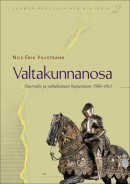 Valtakunnanosa. Suurvalta ja valtakunnan hajoaminen 1560–1812. Suomen ruotsalainen historia 2
Valtakunnanosa. Suurvalta ja valtakunnan hajoaminen 1560–1812. Suomen ruotsalainen historia 2
[The constituent state. Great power and disintegration 1560–1812. Finland’s Swedish history 2]
[Swedish-language original: Riksdelen. Stormakt och rikssprängning 1560–1812, 2008]
Suom. [Finnish translation by] Jussi T. Lappalainen, Hannes Virrankoski
Helsingfors: Svenska litteratursällskapet i Finland, 2012. 424 p., ill.
ISBN 978-951-583-256-6
€40,hardback
This book is the second volume in a four-part series on the Swedish history of Finland. Finland was part of Sweden until 1809, when as a result of war between Sweden and Russia it came under the control of the latter; the change of governance was more or less ratified in a meeting of the Swedish Crown Prince and the Russian Tsar at Turku in 1812. Finland was reunited with its eastern region of ‘Old Finland’, which had long been a part of Russia. In his fascinating book Villstrand examines the Swedish period from several angles, using the viewpoints both of the elite and of the common people. He also reviews the conceptions of the scholars of the time, and portrays the life of the administrative and ecclesiastical circles. A special chapter is devoted to the ‘Finnish period’ of 1721–1809, when Finland gained a particular importance because of the growing threat from Russia. Finland was in many respects an equal part of Sweden, and when the country was ceded to Russia as a Grand Duchy, its old administrative and social systems were largely preserved intact. Swedish also survived for a long time, especially as the language of culture. The book’s apt illustrations are a splendid adjunct to its content.
Translated by David McDuff
Kari Tarkiainen: Ruotsin Itämaa. Esihistoriasta Kustaa Vaasaan [Sweden’s Eastland. From prehistoric times to Gustav Vasa]
18 April 2013 | Mini reviews, Reviews
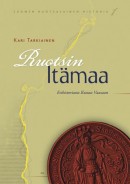 Ruotsin Itämaa. Esihistoriasta Kustaa Vaasaan
Ruotsin Itämaa. Esihistoriasta Kustaa Vaasaan
[Sweden’s Eastland. From prehistoric times to Gustav Vasa].
[Finlands svenska historia del 1: Sveriges Österland. Från forntiden till Gustav Vasa, 2008; Finland’s Swedish history vol. 1, translated into Finnish by the author]
Helsingfors: Svenska litteratursällskapet i Finland, 2010. 331 p., ill.
ISBN 978-951-583-212-2
€39.90, hardback
The historian and archivist Kari Tarkiainen is starting a four-volume series with the general title ‘Finland’s Swedish history’: it forms part of a project funded by Finland’s Swedish-language cultural organisations. This book examines Finland’s prehistoric, medieval and early modern periods, with special emphasis on the two-way relations between Swedes and Finns, and their mutual influence. Initially Finland’s annexation by Sweden from the 12th to the 14th century as ‘Österland’ (Eastland) was a process that involved many stages and also some belligerence, as the Republic of Novgorod in the east also laid claim to the region. Settlements of Swedish-speakers were established on the Åland islands and the coasts; the Swedish Catholic Church (replaced during the Reformation by the Lutheran Church) and the Swedish-language administrative and social system extended their influence on the country, even though Finnish remained the principal language of Finns. Finland remained part of Sweden until the early 19th century. Ruotsin Itämaa is a fascinating book, which draws on archeology, linguistics and onomastics, and is beautifully illustrated.
Translated by David McDuff
Anna-Leena Siikala: Itämerensuomalaisten mytologia [Baltic Finnic mythology]
12 April 2013 | Mini reviews, Reviews
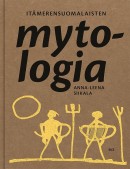 Itämerensuomalaisten mytologia
Itämerensuomalaisten mytologia
[Baltic Finnic mythology]
Helsinki: Finnish Literature Society, 2013. 536 p., ill.
ISBN 978-952-222-393-7
€ 45, hardback
Academician and Professor Emeritus of Folklore Anna-Leena Siikala presents a overview of her research. The book also makes use of the latest research in other fields in order to chart Baltic Finnic folk poetry, shamanism and folk beliefs. The Kalevala, Elias Lönnrot’s epic poem based on Finnish folklore, forms only a part of the poetry written in Kalevala metre. Although the poem is often perceived to be Finno-Karelian in origin, around half of its material is also known in Estonia: many of the poems and myths have links to Uralic and Germanic tradition. By means of numerous examples Siikala illustrates the different styles of folk poetry, its manifestations of vernacular religion and its rich mythology. In Finland the poems became modified over the centuries, influenced by the Christian faith, among other things. In different areas the figure of the divine hero Väinämöinen has acquired different emphases: it is less a question of mythology than of mythologies. The book’s illustrations are rich and informative, and the work is a unique treasure trove in its field.
Translated by David McDuff
